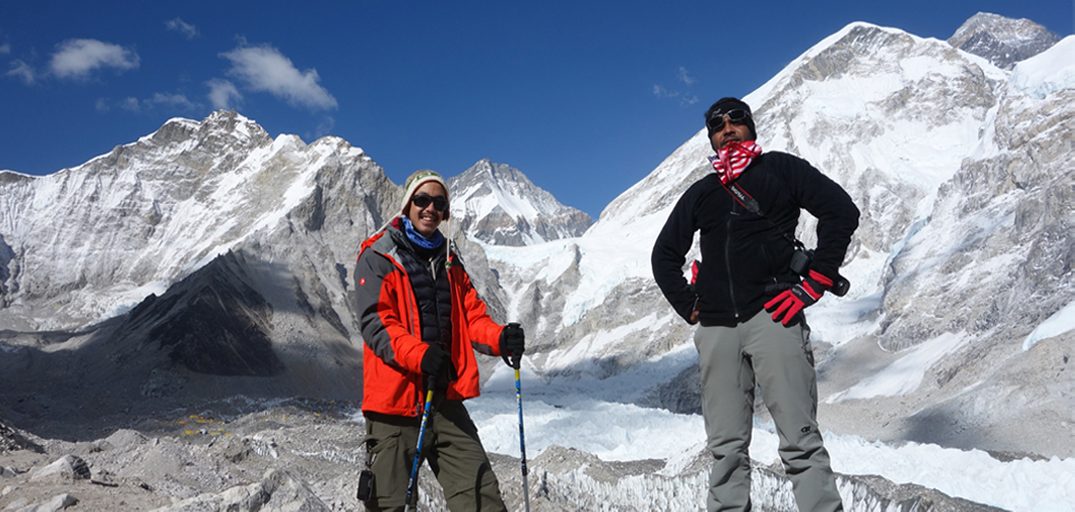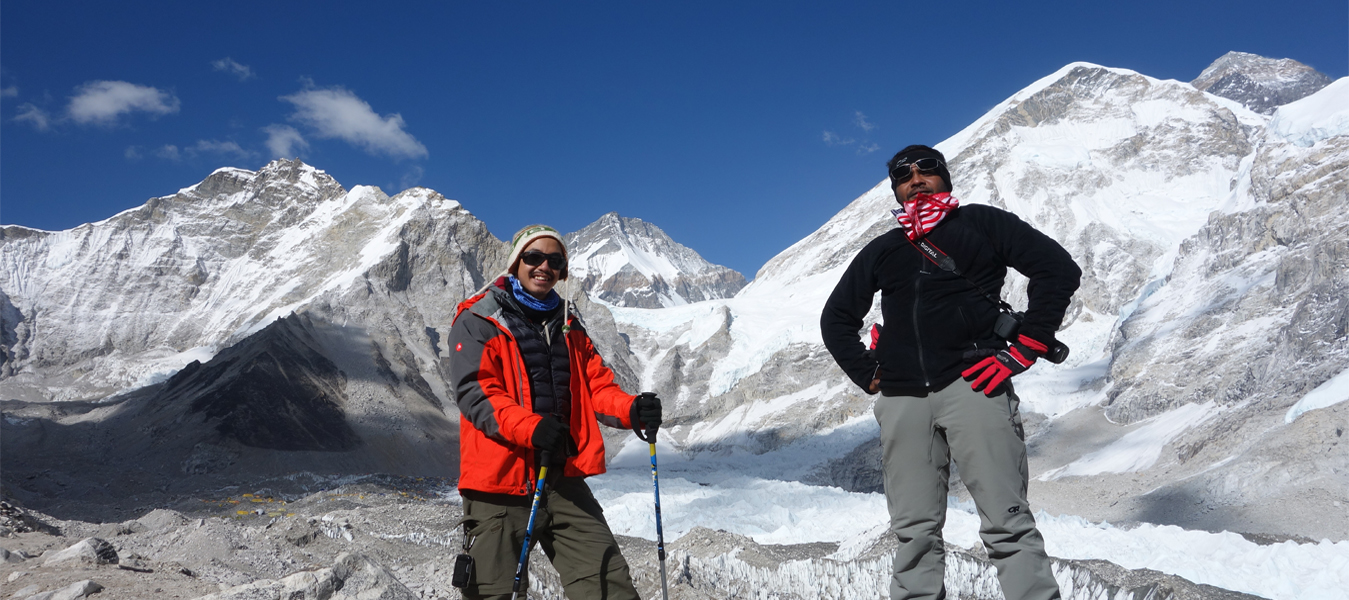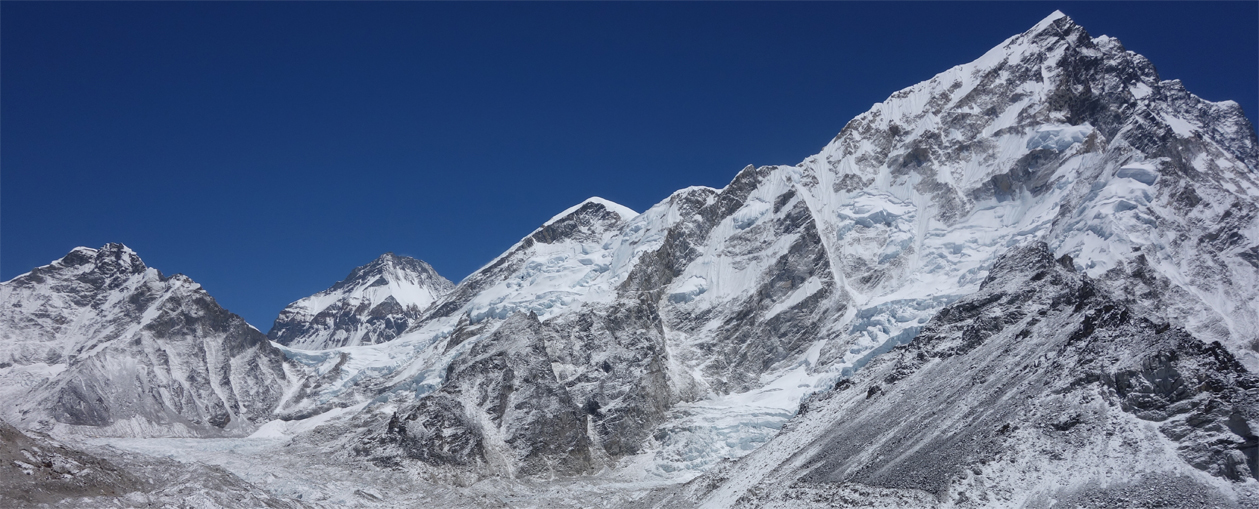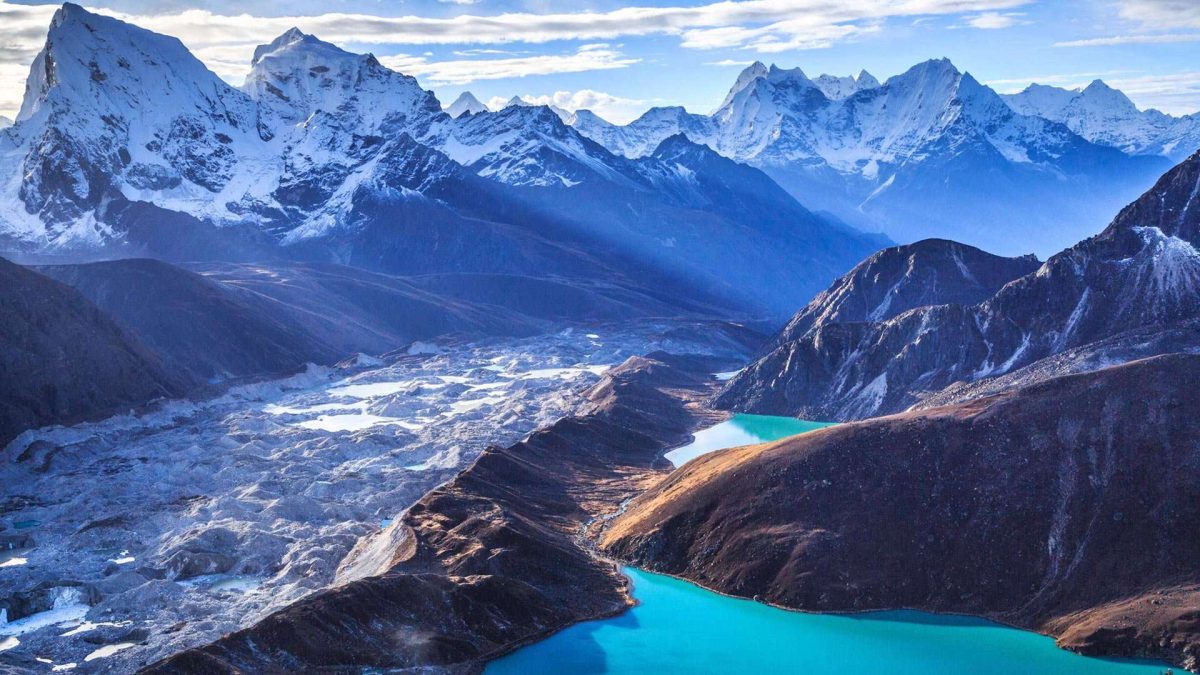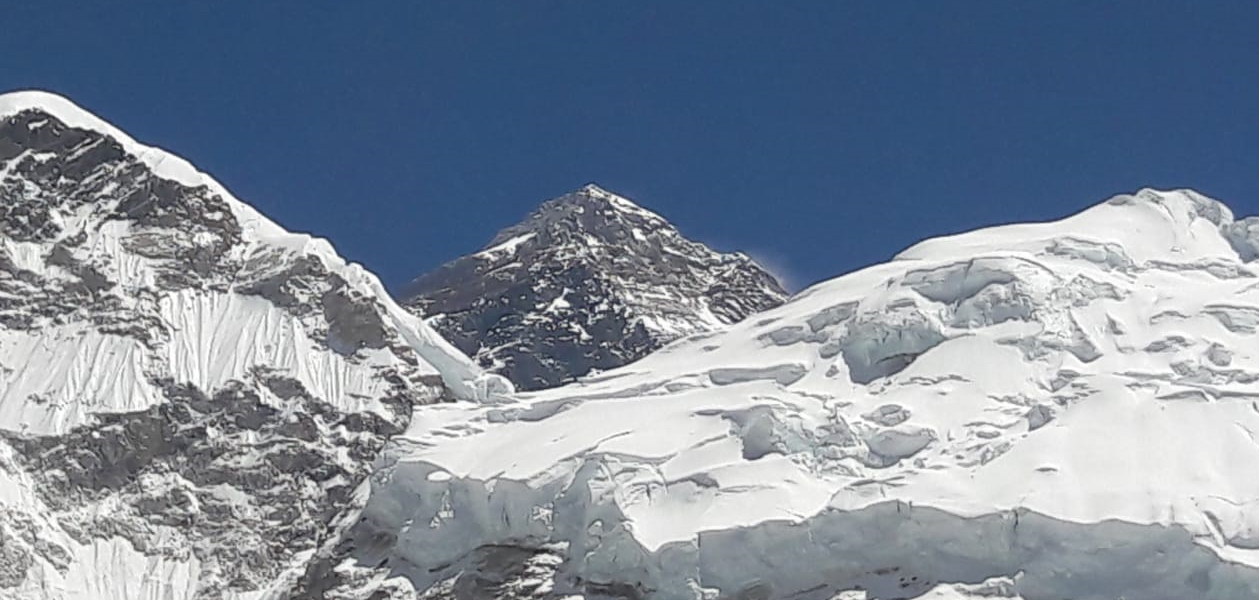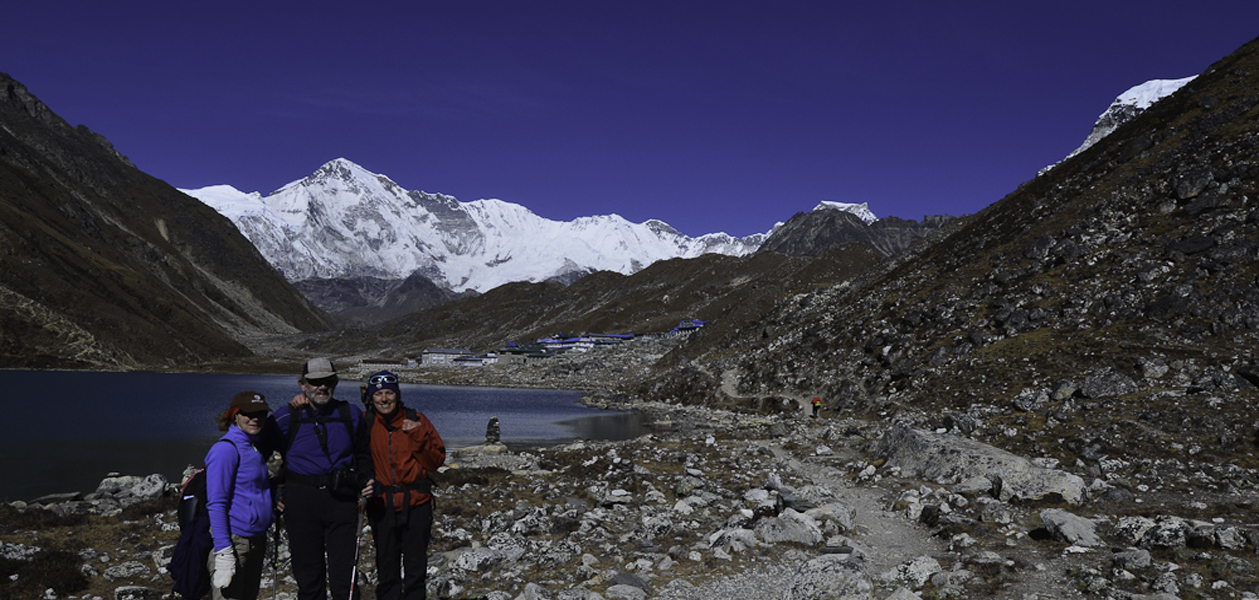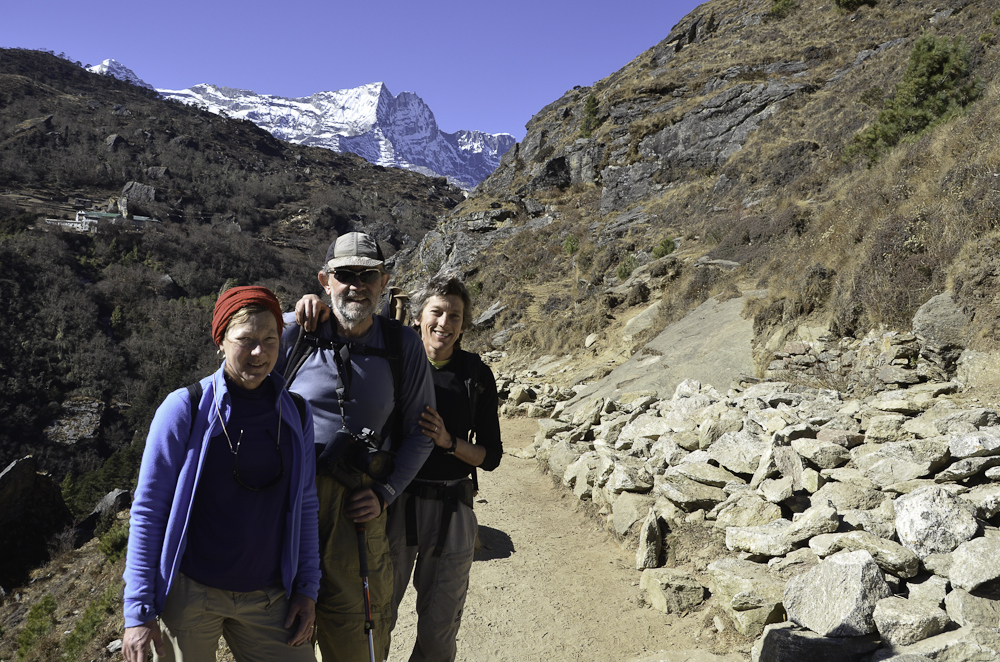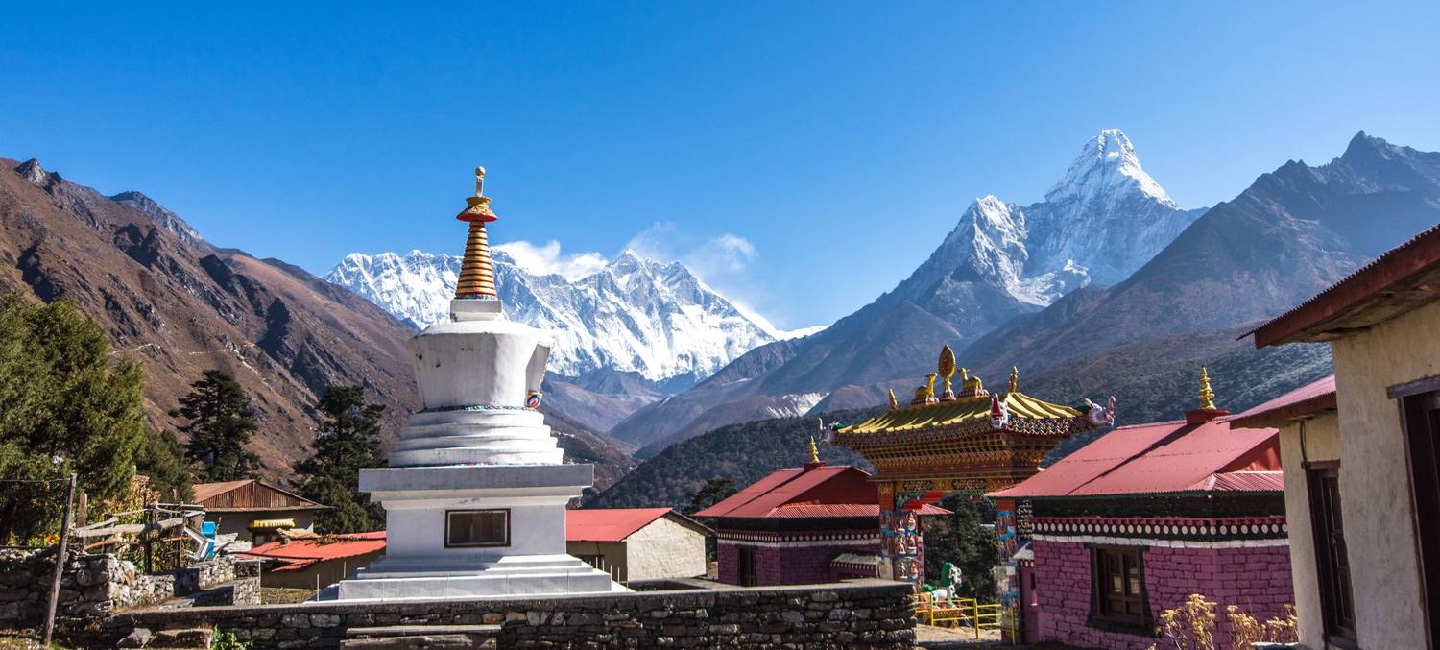Trekking in Everest Region
The Everest region is located in Sagarmatha National Park in the northeast of Nepal. Trekking through the middle hills of Solukhumbu into the higher altitudes of Khumbu and to the base of Mt. Everest (Sagarmatha in Nepalese) provides an opportunity to observe and participate in the daily life of the legendary Sherpa people. The prime attraction however is Mt Everest itself standing at a height of 8848m and the national park is also home to two other eight thousands – Lhotse and Cho Yu – as well as several other prominent peaks above 6000m.
Designated as a World Heritage Site in 1979, much of the 1148 sq. km national park lies above 3000m. The park is composed of rugged terrain with deep gorges, glaciers and huge rocks. The vegetation in the park changes from pine, hemlock, fir, juniper, birch, rhododendron and shrubs to alpine plants and then to bare rock and snow. It is home to the ghoral, tahr, serow and musk deer as well as the impawn pheasant, blood pheasant, red-billed chough and the yellow-billed chough.
The trail to Everest commonly begins at Lukla and its airport at 2850 m. The trail climbs up the Dudhkoshi River Valley, and the following day brings you to the legendary Sherpa village of Namche Bazaar in the Khumbu (3,500 m), which is the staging point for expeditions to Everest and other peaks in the area. Above Namche lie the traditional villages of Khunde and Khumjung. Khumjung which is the largest village in the Khumbu lies at the foot of the sacred peak Khumbila. The Khunde Hospital, maintained by Himalayan Trust, and Khumjung School, the original Hillary School set up in 1960, lie here.
Across the canyon from Khunde, perched on a high ridge, is Tengboche Monastery, the leading Buddhist center in Khumbu. The monastery rests amid stunning views of Everest, Lhotse, and Ama Dablam. Pines, azaleas, and colorful mountain rhododendrons ring the attractive monastery. There are rest houses, lodges, and camping sites here.
From Tengboche, you can continue on to Pheriche, Kalapaththar, and the hamlet of Gorak Shep. From here, the site of Everest Base Camp is easily accessible, as is the summit of Kalapaththar (5,545 m), from which much of Mt. Everest is clearly visible. However, when trekking in this region, you must take time to properly acclimatize as the altitude gains are rapid.

